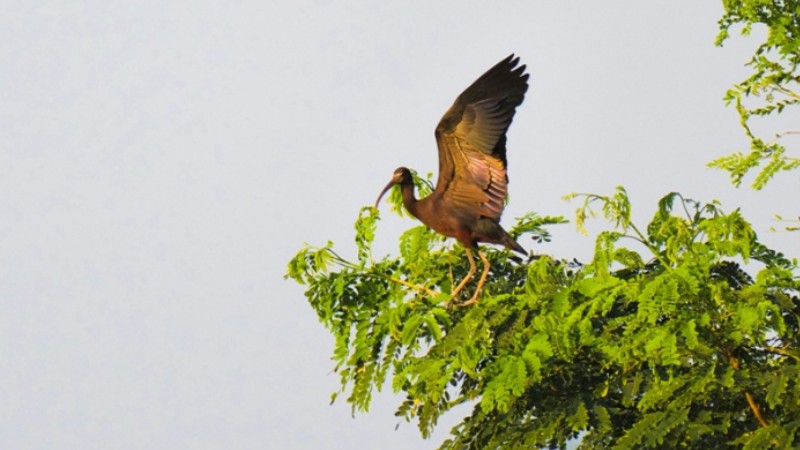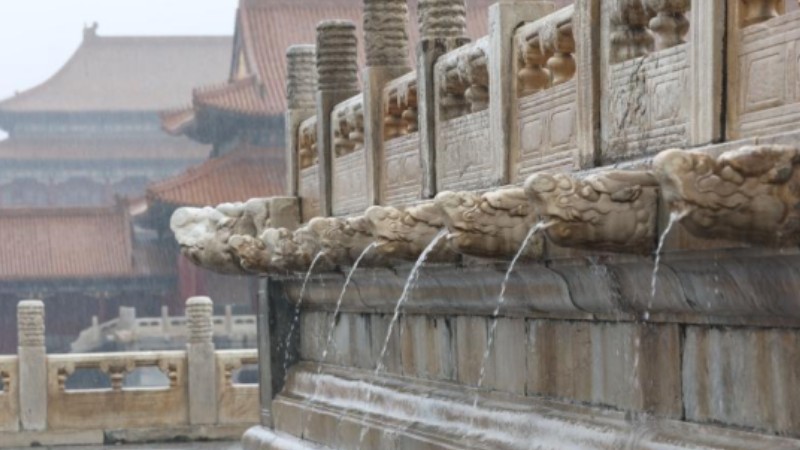Greening China's "loneliest city" in Gobi desert
XINING, Aug. 4 (Xinhua) -- Strolling in the forest with her custodian, listening to tree leaves rustling, the forest ranger Suyee recalled a past when none of her parents' Goji berry seedlings survived the harsh natural conditions in her silo-like hometown.
Her hometown, Mangya City in the Haixi Mongolian and Tibetan Autonomous Prefecture of Qinghai Province, is nicknamed "the loneliest city in China," because it is surrounded by no man's land of Hoh Xil, the Altun Mountains and Lop Nur.
Not a city sits within the 350-km radius of Mangya, and the closest city, Dunhuang, is 390 km away. There is nothing but desolation in every direction of Mangya. However, greenness marks the city out in the vast span of the Gobi desert.
"Each time I return home from outside Mangya, the journey is extremely long, but as long as greens show up, I know it's home," said Uyuuna, a primary school teacher in Mangya, speaking of how the color of green is etched in her mind as associated with home.
Taking care of one tree is extra demanding in Mangya, where 80 percent of the region has an elevation of over 3,000 meters, the Gobi desert and flowing sand dunes take up over two-thirds of the land, and annual precipitation stands at less than 60 mm vis-a-vis annual evaporation of over 2,600 mm. Growing forests took unremitting efforts of more than one generation.
"I grew up here, and our family has a pasture, sheep, and cattle here," said Suyee, the forest ranger, daughter of a herdsman family of the Mongolian ethnic group.
She has a love-hate complex toward this parched land. "When I was young, my parents once planted some 100 Goji berry seedlings in the hopes of selling the berries for cash and feeding sheep with the plants as grass in our pasture didn't grow well. However, they all withered before even taking root."
To counter the restraints of natural conditions on development, since 2008, Mangya City has allocated one-fourth of its budget every year to environment development, and set out to green the city.
Ridding the land of salinity and alkalinity, choosing viable tree varieties, and addressing shortages of water resources are the three biggest roadblocks.
"We turned to nearby cities for clues on the choice of trees, and invited experts from other places to help improve the fertility of the soil," said Pan Haijun, a senior forest ranger, noting that the cost of planting one tree in Mangya is several times or dozens of times higher than in eastern regions, let alone human efforts invested in the job.
"No budding seedling can survive the typically precipitous fall of temperature here, from some 25 degrees Celcius in the daytime to below zero at night. Besides, the water was scarce, salty, and alkaline in most cases, and the sandstorm was even able to peel off tree trunks," reminisced Pan. "However, if one tree dies, we plant two more."
With such strong will and relentless efforts, locals have significantly improved the environment, with the encroachment of sand basically arrested, and the acreage of greens expanded.
The area of afforestation expanded from 300 mu (20 hectares) to over 6,320 mu today, and the cost of afforestation was reduced from 170,000 yuan (23,803.5 U.S. dollars) per mu previously to some 27,000 yuan per mu, as technicians have overcome difficulties such as boosting soil fertility.
Suyee is responsible for 138 mu of the total. "The climate is getting better, I am quite sure that if my family planted Goji berry seedlings again, they would fare differently."
Mangya stands as an example of the country's extensive afforestation efforts, perhaps an extreme one due to its unforgiving natural conditions.
During the 2012-2022 period, China's accumulative afforestation area reached 960 million mu, while 165 million mu of grassland was improved, and more than 12 million mu of wetlands was added or restored, official data showed.
Photos
Related Stories
Copyright © 2023 People's Daily Online. All Rights Reserved.









